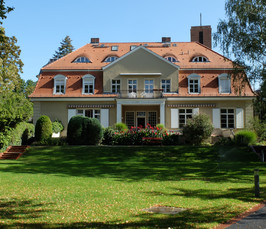Theoretical Perspectives on Proton-Coupled Electron Transfer
- TH Department Online Seminar
- Date: Apr 22, 2021
- Time: 04:00 PM - 05:00 PM (Local Time Germany)
- Speaker: Prof. Dr. Sharon Hammes-Schiffer
- Yale University, Department of Chemistry, New Haven, CT, USA
- Location: https://us02web.zoom.us/j/86018907475?pwd=amdYejRYcUQ3dVpndXhYcnZhNUd1dz09
- Room: Meeting ID: 860 1890 7475 | Passcode: 604772
- Host: TH Department

A general theoretical formulation has been developed for PCET in solution, proteins, and electrochemical systems. This theory includes the quantum mechanical effects of the electrons and transferring proton(s), as well as the motions of the proton donor-acceptor mode and reorganization of the solvent or protein environment. Rate constant expressions have been derived for different coupling strengths, spanning the adiabatic and nonadiabatic limits as well as the intermediate regime. Extensions of this theory to heterogeneous PCET processes at electrode interfaces account for the effects of the continuum of electronic states in the electrode and the electrical double layer. This PCET theory has been applied to a wide range of experimentally studied systems, including molecular electrocatalysts, enzymes, molecular proton wires, CH bond activation catalysts, photoreduced metal-oxide nanocrystals, and proton discharge on electrode surfaces. To facilitate additional PCET studies, the nuclear-electronic orbital (NEO) method has been developed for treating electrons and protons on the same level with density functional theory or wave function methods. The NEO method can be used to compute ground and excited electron-proton vibronic state energies and optimized geometries, as well as hydrogen tunneling splittings. The NEO approach also enables nonequilibrium quantum dynamical simulations of photoinduced PCET reactions beyond the Born-Oppenheimer approximation.